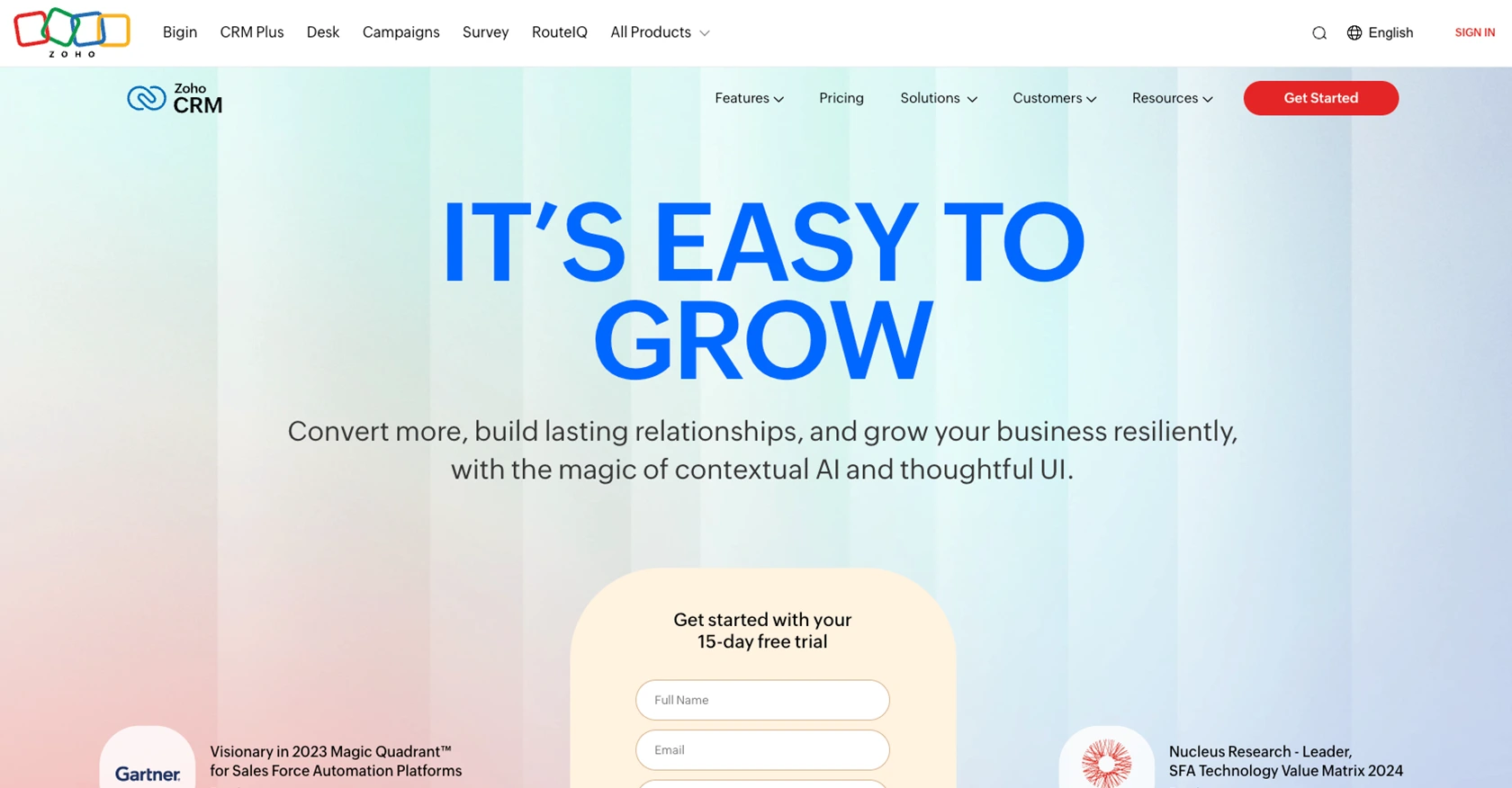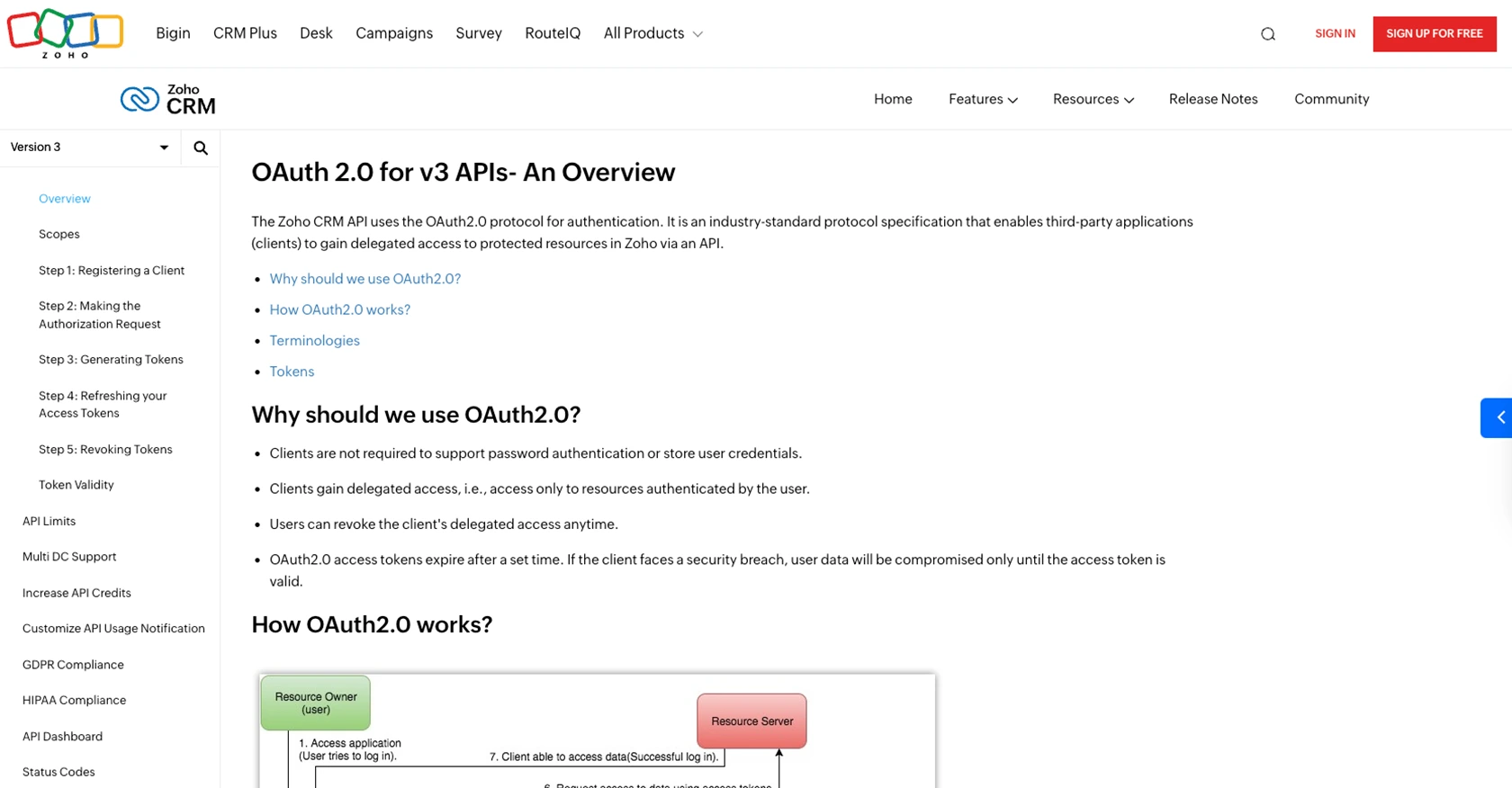Using the Zoho CRM API to Get Contacts (with Javascript examples)

Introduction to Zoho CRM
Zoho CRM is a comprehensive customer relationship management platform that empowers businesses to manage their sales, marketing, and customer support in a unified system. Known for its flexibility and scalability, Zoho CRM is a popular choice for businesses looking to enhance their customer engagement and streamline operations.
Integrating with Zoho CRM's API allows developers to access and manipulate customer data programmatically, enabling automation and customization of CRM processes. For example, a developer might use the Zoho CRM API to retrieve contact information and seamlessly integrate it with other business applications, enhancing data consistency and operational efficiency.
Setting Up Your Zoho CRM Test/Sandbox Account
Before you can start integrating with the Zoho CRM API, you need to set up a test or sandbox account. This allows you to safely experiment with API calls without affecting live data. Follow these steps to get started:
Create a Zoho CRM Account
- Visit the Zoho CRM signup page.
- Fill in the required information to create a free account. If you already have an account, simply log in.
Access the Zoho Developer Console
To interact with the Zoho CRM API, you need to register your application in the Zoho Developer Console:
- Navigate to the Zoho Developer Console.
- Select "Add Client" to create a new application.
- Choose the client type as "Web Based" for applications running on a dedicated HTTP server.
- Enter the required details such as Client Name, Homepage URL, and Authorized Redirect URIs.
- Click "Create" to generate your Client ID and Client Secret.
Configure OAuth 2.0 Authentication
Zoho CRM uses OAuth 2.0 for authentication. Follow these steps to set up OAuth:
- Use the Client ID and Client Secret obtained from the Developer Console.
- Make an authorization request to Zoho's OAuth server to obtain an authorization code.
- Exchange the authorization code for an access token and refresh token.
- Use the access token to authenticate API requests. Remember, the access token is valid for one hour, and you can use the refresh token to obtain a new access token.
For detailed instructions on OAuth setup, refer to the Zoho CRM OAuth documentation.
Set Up Zoho CRM Sandbox Environment
To test your API integrations without affecting live data, use the Zoho CRM Sandbox:
- Log in to your Zoho CRM account and navigate to the Sandbox section under Setup.
- Create a new sandbox environment and configure it according to your testing needs.
- Use the sandbox environment to test API calls and verify their effects before deploying to production.
With your Zoho CRM test account and OAuth setup, you're ready to start making API calls and integrating Zoho CRM into your applications.

sbb-itb-96038d7
Making API Calls to Retrieve Contacts from Zoho CRM Using JavaScript
In this section, we'll explore how to make API calls to Zoho CRM to retrieve contact information using JavaScript. This will enable you to integrate Zoho CRM data seamlessly into your applications, enhancing data accessibility and operational efficiency.
Prerequisites for Zoho CRM API Integration with JavaScript
Before proceeding, ensure you have the following prerequisites:
- Node.js installed on your machine.
- An active Zoho CRM account with API access.
- OAuth 2.0 setup completed as described in the previous section.
Installing Required Node.js Packages
To interact with the Zoho CRM API using JavaScript, you need to install the axios package for making HTTP requests. Run the following command in your terminal:
npm install axiosExample Code to Retrieve Contacts from Zoho CRM
Below is an example code snippet demonstrating how to retrieve contacts from Zoho CRM using JavaScript:
const axios = require('axios');
// Set the API endpoint and headers
const endpoint = 'https://www.zohoapis.com/crm/v3/Contacts';
const headers = {
'Authorization': 'Zoho-oauthtoken YOUR_ACCESS_TOKEN'
};
// Function to get contacts
async function getContacts() {
try {
const response = await axios.get(endpoint, { headers });
const contacts = response.data.data;
console.log('Contacts:', contacts);
} catch (error) {
console.error('Error fetching contacts:', error.response.data);
}
}
// Call the function
getContacts();
Replace YOUR_ACCESS_TOKEN with the access token obtained from the OAuth 2.0 setup.
Understanding the API Response and Handling Errors
Upon successful execution, the API will return a list of contacts from Zoho CRM. The response will include contact details such as email, phone number, and more. If the request fails, the error message will be logged to the console. Common error codes include:
- INVALID_MODULE: The module name is invalid. Ensure you are using the correct API endpoint.
- NO_PERMISSION: The user does not have permission to access the records. Verify your API permissions.
For a complete list of error codes, refer to the Zoho CRM API status codes documentation.
Verifying API Call Success in Zoho CRM Sandbox
To verify the success of your API call, log in to your Zoho CRM sandbox environment and check the contacts module. The retrieved contacts should match the data returned by the API call.
By following these steps, you can efficiently integrate Zoho CRM contacts into your applications using JavaScript, enabling enhanced data management and automation capabilities.

Conclusion: Best Practices for Zoho CRM API Integration Using JavaScript
Integrating with the Zoho CRM API using JavaScript offers a powerful way to enhance your business applications by automating and streamlining CRM processes. By following the steps outlined in this guide, you can efficiently retrieve and manage contact data, ensuring seamless integration with your existing systems.
Best Practices for Secure and Efficient Zoho CRM API Usage
- Securely Store Credentials: Always store your OAuth tokens securely. Avoid hardcoding them in your source code and consider using environment variables or secure vaults.
- Handle Rate Limits: Zoho CRM imposes API rate limits. Monitor your API usage and implement retry logic to handle rate limit errors gracefully. For more details, refer to the Zoho CRM API limits documentation.
- Data Transformation: Standardize and transform data fields as needed to ensure consistency across different systems and applications.
Enhance Your Integration Strategy with Endgrate
While integrating with Zoho CRM can significantly enhance your application, managing multiple integrations can be complex and time-consuming. Endgrate simplifies this process by providing a unified API endpoint that connects to various platforms, including Zoho CRM. This allows you to focus on your core product while Endgrate handles the intricacies of integration.
With Endgrate, you can save time and resources by building once for each use case, rather than multiple times for different integrations. Explore how Endgrate can streamline your integration strategy by visiting Endgrate's website.
Read More
- https://endgrate.com/provider/zohocrm
- https://www.zoho.com/crm/developer/docs/api/v3/oauth-overview.html
- https://www.zoho.com/crm/developer/docs/api/v3/scopes.html
- https://www.zoho.com/crm/developer/docs/api/v3/register-client.html
- https://www.zoho.com/crm/developer/docs/api/v3/api-limits.html
- https://www.zoho.com/crm/developer/docs/api/v3/status-codes.html
- https://www.zoho.com/crm/developer/docs/api/v3/field-meta.html
- https://www.zoho.com/crm/developer/docs/api/v3/get-records.html
Ready to get started?
